Non-Destructive Evaluation of Microstructural Changes Induced by Thermo-Mechanical Fatigue in Ferritic and Ferritic/Martensitic Steels
Abstract
:Featured Application
Abstract
1. Introduction
2. Materials and Methods
2.1. Materials: P91 and HiperFer-17Cr2
2.2. Analyses of the Changes in Mechanical Properties by Indentation Testing
2.3. Isothermal Fatigue Loading of P91 and HiperFer-17Cr2
2.4. Micromagnetic Multiparameter, Microstructure and Stress Analysis (3MA) Method
2.5. Machine Learning (ML) Methods
3. Results and Discussion
- Correlation of features derived from the 3MA-X8 with the number of load cycles;
- Correlation of features derived from the 3MA-X8 with the mechanical properties;
- Prediction of the mechanical properties based on 3MA-X8 measurements using ML methods;
- Prediction of the microstructural features (e.g., precipitation density) based on 3MA-X8 measurements using ML methods.
3.1. Results of the Analysis of P91
3.2. Results of the Analysis of HiperFer-17Cr2
3.2.1. Low-Cycle Fatigue (LCF)
3.2.2. High-Cycle Fatigue (HCF)
4. Conclusions
Author Contributions
Funding
Institutional Review Board Statement
Informed Consent Statement
Data Availability Statement
Conflicts of Interest
References
- Shankar, V.; Bauer, V.; Sandhya, R.; Mathew, M.D.; Christ, H.-J. Low cycle fatigue and thermo-mechanical fatigue behavior of modified 9Cr–1Mo ferritic steel at elevated temperatures. J. Nucl. Mater. 2012, 420, 23–30. [Google Scholar] [CrossRef]
- Nagesha, A.; Kannan, R.; Sastry, G.; Sandhya, R.; Singh, V.; Bhanu Sankara Rao, K.; Mathew, M.D. Isothermal and thermomechanical fatigue studies on a modified 9Cr–1Mo ferritic martensitic steel. Mater. Sci. Eng. A 2012, 554, 95–104. [Google Scholar] [CrossRef]
- Viswanathan, R.; Bakker, W. Materials for Ultrasupercritical Coal Power Plants—Boiler Materials: Part 1. J. Mater. Eng. Perform. 2001, 10, 81–95. [Google Scholar] [CrossRef]
- Aarab, F.; Kuhn, B. Development of Self-Passivating, High-Strength Ferritic Alloys for Concentrating Solar Power (CSP) and Thermal Energy Storage (TES) Applications. Energies 2023, 16, 4084. [Google Scholar] [CrossRef]
- Kuhn, B.; Talik, M.; Niewolak, L.; Zurek, J.; Hattendorf, H.; Ennis, P.J.; Quadakkers, W.J.; Beck, T.; Singheiser, L. Development of high chromium ferritic steels strengthened by intermetallic phases. Mater. Sci. Eng. A 2014, 594, 372–380. [Google Scholar] [CrossRef]
- Fischer, T.; Kuhn, B. Active Crack Obstruction Mechanisms in Crofer® 22H at 650 °C. Materials 2022, 15, 6280. [Google Scholar] [CrossRef]
- Weikert-Müller, M.; Weber, F.; Thieltges, S.; Smaga, M.; Silber, F.; Rudolph, J.; Bergholz, S.; Bechtgold, E. Development of a New Thermo-Mechanical Load and Fatigue Monitoring Approach Based on Electromagnetic Acoustic Transducers—EMUS-4-STRESS. In Volume 1: Codes & Standards, Proceedings of the ASME 2023 Pressure Vessels & Piping Conference, Atlanta, GA, USA, 16–21 July 2023; American Society of Mechanical Engineers: Atlanta, GA, USA, 2023; ISBN 978-0-7918-8744-8. [Google Scholar]
- Cullity, B.D.; Graham, C.D. Introduction to Magnetic Materials; Wiley: Hoboken, NJ, USA, 2008; ISBN 9780470386323. [Google Scholar] [CrossRef]
- Altpeter, I.; Becker, R.; Dobmann, G.; Kern, R.; Theiner, W.; Yashan, A. Robust solutions of inverse problems in electromagnetic non-destructive evaluation. Inverse Probl. 2002, 18, 1907–1921. [Google Scholar] [CrossRef]
- Takahashi, S.; Kobayashi, S.; Kikuchi, H.; Kamada, Y. Relationship between mechanical and magnetic properties in cold rolled low carbon steel. J. Appl. Phys. 2006, 100, 113908. [Google Scholar] [CrossRef]
- Valeske, B.; Tschuncky, R.; Leinenbach, F.; Osman, A.; Wei, Z.; Römer, F.; Koster, D.; Becker, K.; Schwender, T. Cognitive sensor systems for NDE 4.0: Technology, AI embedding, validation and qualification. TM—Tech. Messen 2022, 89, 253–277. [Google Scholar] [CrossRef]
- Lehner, P.; Blinn, B.; Fischer, T.; Kuhn, B.; Beck, T. Influence of the strain rate on the fatigue behaviour of fully ferritic high chromium steel and P91 steel at high temperatures. Int. J. Fatigue 2024, 186, 108388. [Google Scholar] [CrossRef]
- Lehner, P.; Blinn, B.; Beck, T. Changes in microstructure and mechanical properties of ferritic high chromium steel and P91 induced by isothermal fatigue. Mater. Sci. Eng. A 2025, 923, 147713. [Google Scholar] [CrossRef]
- Görzen, D.; Schwich, H.; Blinn, B.; Song, W.; Krupp, U.; Bleck, W.; Beck, T. Influence of Cu precipitates and C content on the defect tolerance of steels. Int. J. Fatigue 2021, 144, 106042. [Google Scholar] [CrossRef]
- Kramer, H.S.; Starke, P.; Klein, M.; Eifler, D. Cyclic hardness test PHYBALCHT—Short-time procedure to evaluate fatigue properties of metallic materials. Int. J. Fatigue 2014, 63, 78–84. [Google Scholar] [CrossRef]
- Schwich, H.; Görzen, D.; Blinn, B.; Beck, T.; Bleck, W. Characterization of the precipitation behavior and resulting mechanical properties of copper-alloyed ferritic steel. Mater. Sci. Eng. A 2020, 772, 138807. [Google Scholar] [CrossRef]
- Palanisamy, R. Review of ultrasonic methods for fatigue damage evaluation. Mater. Today Proc. 2020, 33, 3881–3885. [Google Scholar] [CrossRef]
- Palit Sagar, S.; Das, S.; Paridaa, N.; Bhattacharya, D.K. Non-Iinear ultrasonic technique to assess fatigue damage in structural steel. Scr. Mater. 2006, 55, 199–202. [Google Scholar] [CrossRef]
- Kellerer, E. Ultraschalllaminographie—Ein Neues Verfahren zur Früherkennung von Zeitstandschäden an Rohrbögen. Ph.D. Dissertation, TU München, München, Germany, 2001. [Google Scholar]
- Smaga, M.; Eifler, D. Fatigue Life Calculation of Metastable Austenitic Stainless Steels on the Basis of Magnetic Measurements. Mater. Test.—Mater. Compon. Technol. Appl. 2009, 51, 370–375. [Google Scholar] [CrossRef]
- Altpeter, I.; Tschuncky, R.; Hällen, K.; Dobmann, G.; Boller, C.; Sorich, A.; Smaga, M.; Eifler, D. Early Detection of Damage in Thermo-Cyclically Loaded Austenitic Materials; Studies in Applied Electromagnetics and Mechanics; IOS Press: Amsterdam, The Netherlands, 2012; Volume 36, pp. 130–139. ISBN 978-1-60750-967-7. [Google Scholar]
- Smaga, M.; Hahnenberger, F.; Sorich, A.; Eifler, D. Cyclic deformation behavior of austenitic steels in the temperature range −60 °C ≤ T ≤ 550 °C. Key Eng. Mater. 2011, 465, 439–442. [Google Scholar] [CrossRef]
- Sorich, A.; Smaga, M.; Eifler, D. Fatigue Monitoring of Austenitic Steels with Electromagnetic Acoustic Transducers (EMATs). Mater. Perform. Charact. 2015, 4, 263–274. [Google Scholar] [CrossRef]
- Yang, B.; Liaw, P.; Wang, H.; Jiang, L.; Huang, J.; Kuo, R.; Huang, J. Thermographic investigation of the fatigue behavior of reactor pressure vessel steels. Mater. Sci. Eng. 2001, 314A, 131–139. [Google Scholar] [CrossRef]
- Liu, J.; Strangwood, M.; Davis, C.L.; Parker, J. Non-destructive characterisation of N/Al level in P91 steels using electromagnetic sensors. Mater. Sci. Technol. 2015, 31, 1042–1050. [Google Scholar] [CrossRef]
- Mitra, A.; Mohapatra, J.N.; Swaminathan, J.; Ghosh, M.; Panda, A.K.; Ghosh, R.N. Magnetic evaluation of creep in modified 9Cr–1Mo steel. Scr. Mater. 2007, 57, 813–816. [Google Scholar] [CrossRef]
- Seeger, A. Moderne Probleme der Metallphysik; Springer: Berlin/Heidelberg, Germany, 1965; ISBN 978-3-642-87530-4. [Google Scholar]
- Wolter, B.; Gabi, Y.; Conrad, C. Nondestructive Testing with 3MA—An Overview of Principles and Applications. Appl. Sci. 2019, 9, 1068. [Google Scholar] [CrossRef]
- Zimmer, C.; Szielasko, K.; Rallabandi, Y.N.; Eichheimer, C.; Luke, M.; Youssef, S. Micromagnetic Microstructure- and Stress-Independent Materials Characterization in Reactor Safety Research. Materials 2021, 14, 5258. [Google Scholar] [CrossRef]
- Ankener, W.; Böttger, D.; Smaga, M.; Gabi, Y.; Straß, B.; Wolter, B.; Beck, T. Micromagnetic and Microstructural Characterization of Ferromagnetic Steels in Different Heat Treatment Conditions. Sensors 2022, 22, 4428. [Google Scholar] [CrossRef]
- Rabung, M.; Kopp, M.; Gasparics, A.; Vértesy, G.; Szenthe, I.; Uytdenhouwen, I.; Szielasko, K. Micromagnetic Characterization of Operation-Induced Damage in Charpy Specimens of RPV Steels. Appl. Sci. 2021, 11, 2917. [Google Scholar] [CrossRef]
- Vértesy, G.; Rabung, M.; Gasparics, A.; Uytdenhouwen, I.; Griffin, J.; Algernon, D.; Grönroos, S.; Rinta-Aho, J. Evaluation of the Embrittlement in Reactor Pressure-Vessel Steels Using a Hybrid Nondestructive Electromagnetic Testing and Evaluation Approach. Materials 2024, 17, 1106. [Google Scholar] [CrossRef]
- Szielasko, K.; Wolter, B.; Tschuncky, R.; Youssef, S. Micromagnetic materials characterization using machine learning. TM—Tech. Messen 2020, 87, 428–437. [Google Scholar] [CrossRef]
- Abe, F. Progress in Creep-Resistant Steels for High Efficiency Coal-Fired Power Plants. ASME J. Press. Vessel Technol. 2016, 138, 040804. [Google Scholar] [CrossRef]
- Altpeter, I.; Kern, R.; Höller, P. Characterization of Cementite in Steel and White Cast Iron by Micro-magnetic Nondestructive Methods. In Nondestructive Characterization of Materials III, Proceedings of the 3rd International Symposium Saarbrücken, FRG, Saarbrücken, Germany, 3–6 October 1988; Springer: Berlin/Heidelberg, Germany, 1989; pp. 606–613. [Google Scholar]
- García-Martín, J.; Gómez-Gil, J.; Vázquez-Sánchez, E. Non-destructive techniques based on eddy current testing. Sensors 2011, 11, 2525–2565. [Google Scholar] [CrossRef]
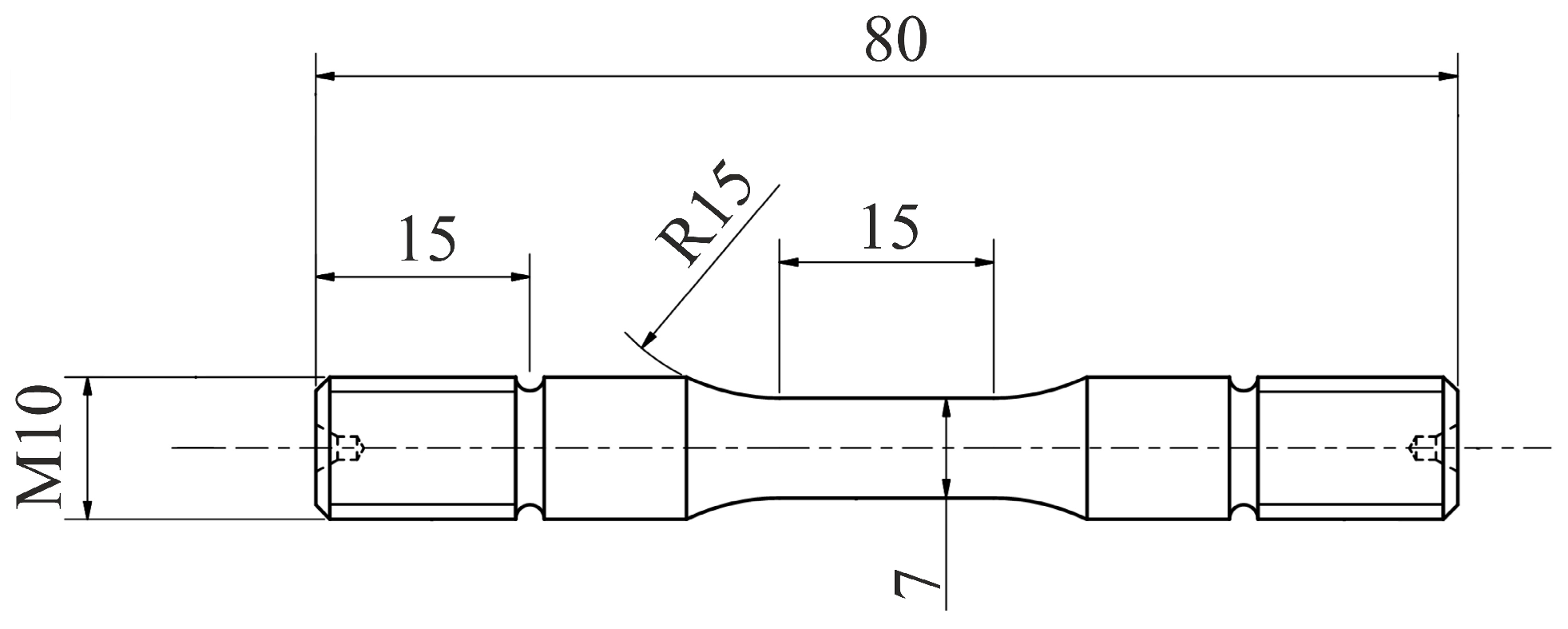
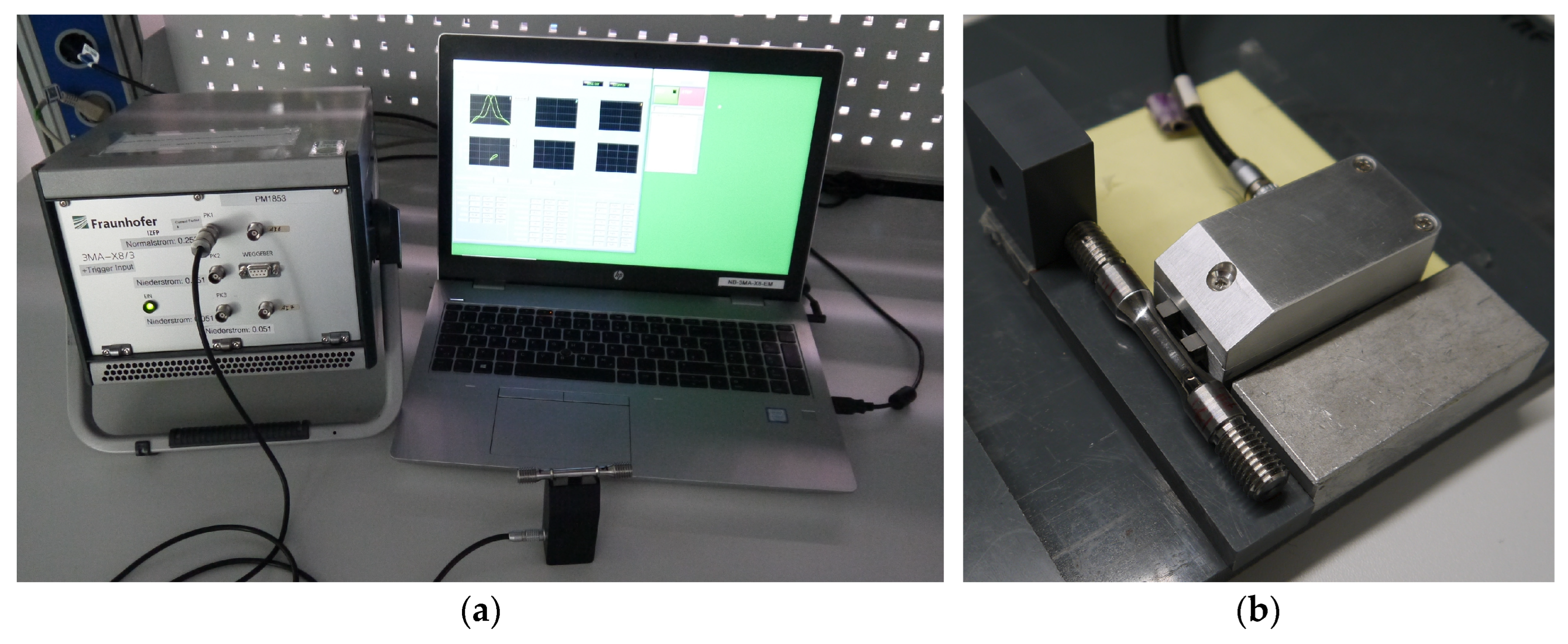
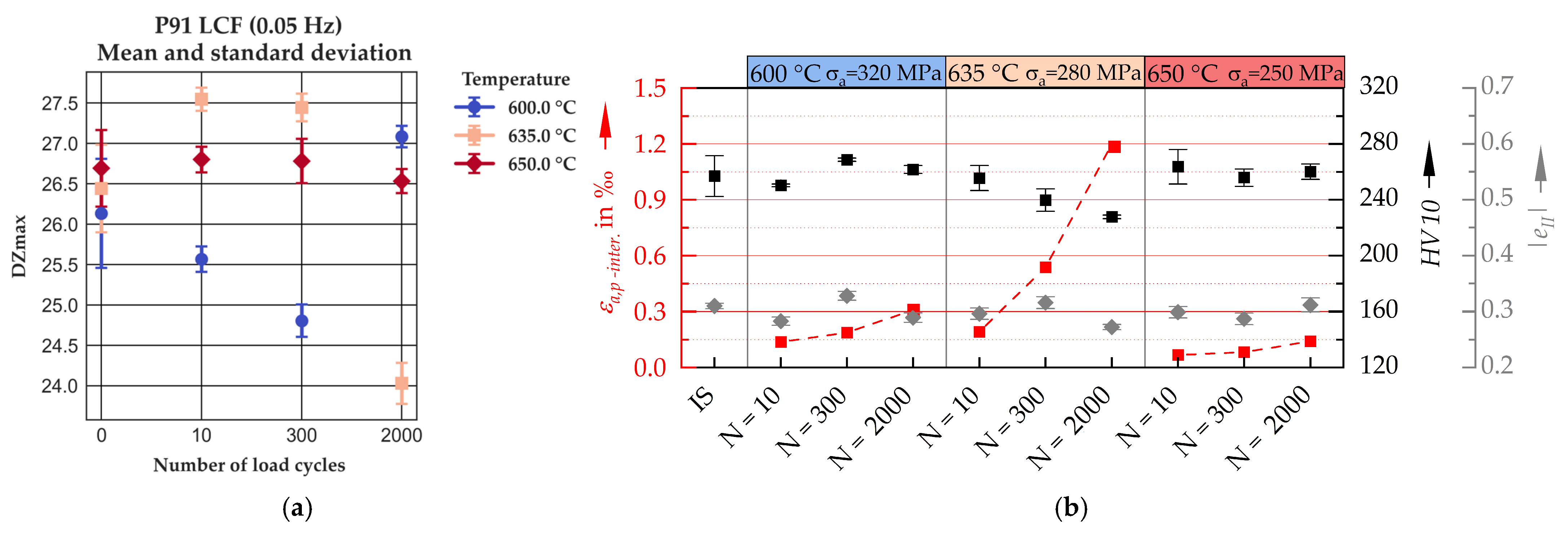
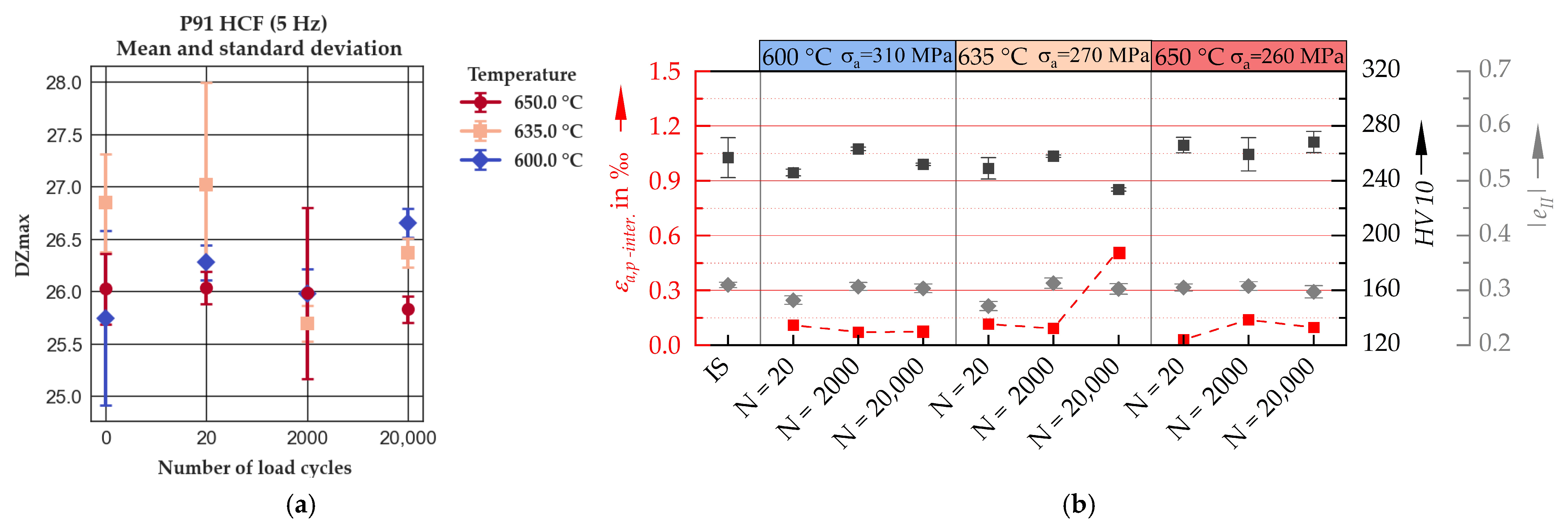
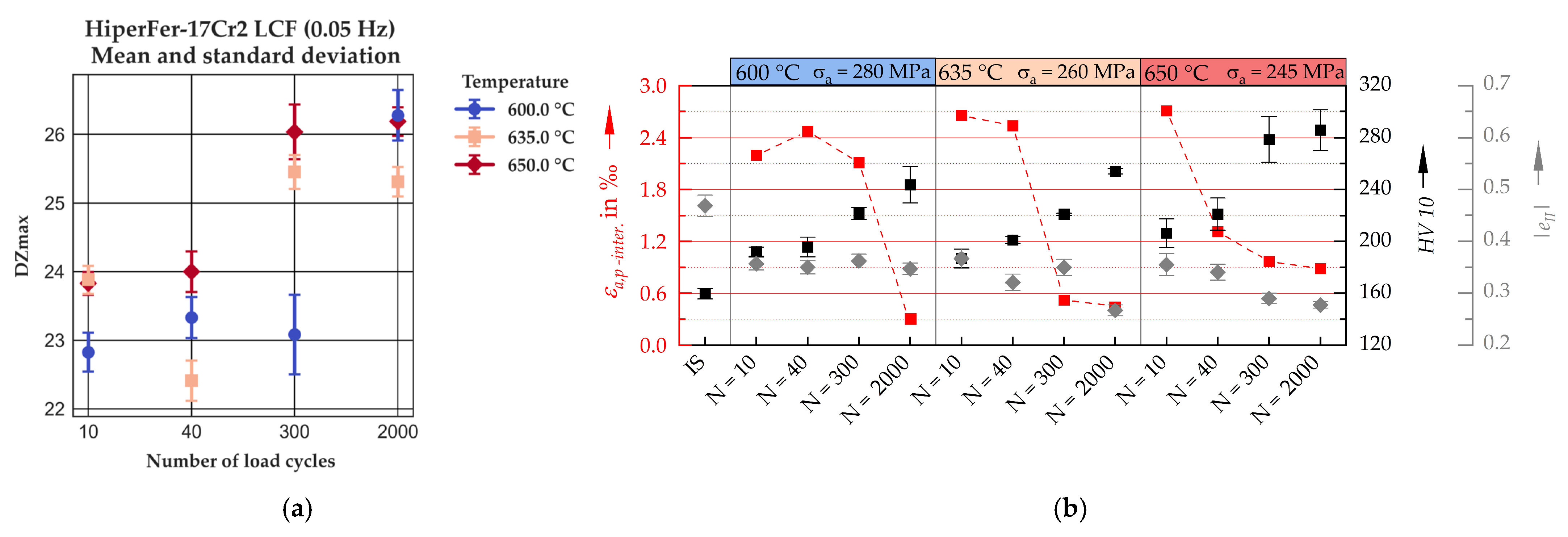



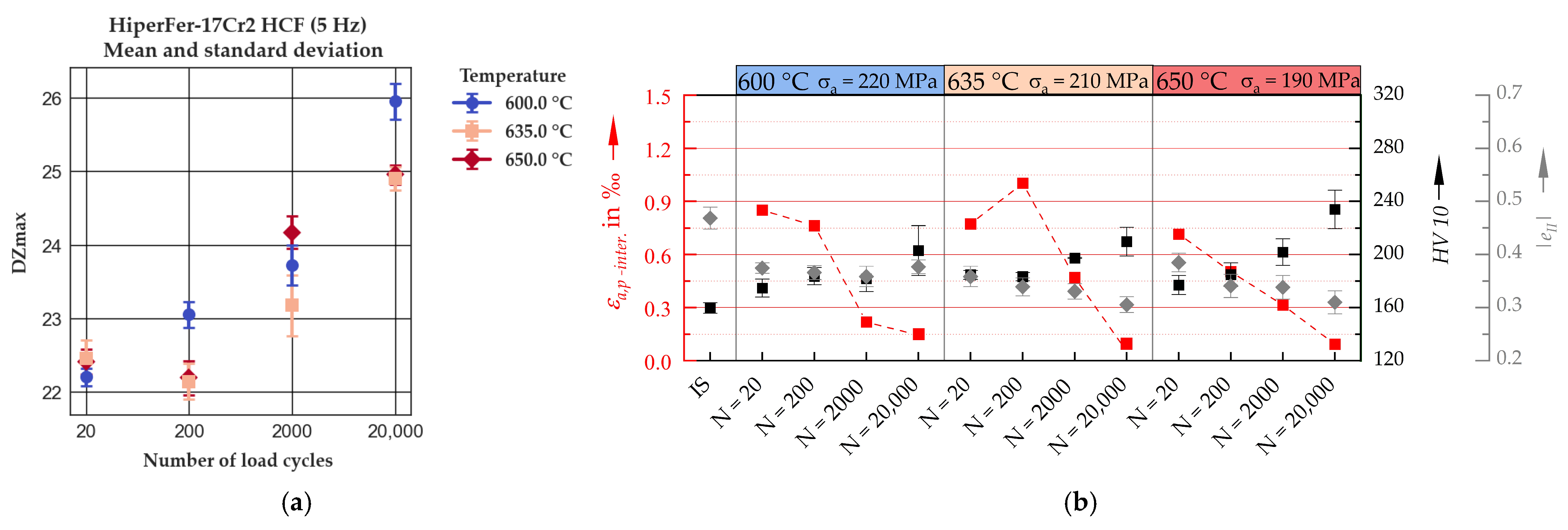


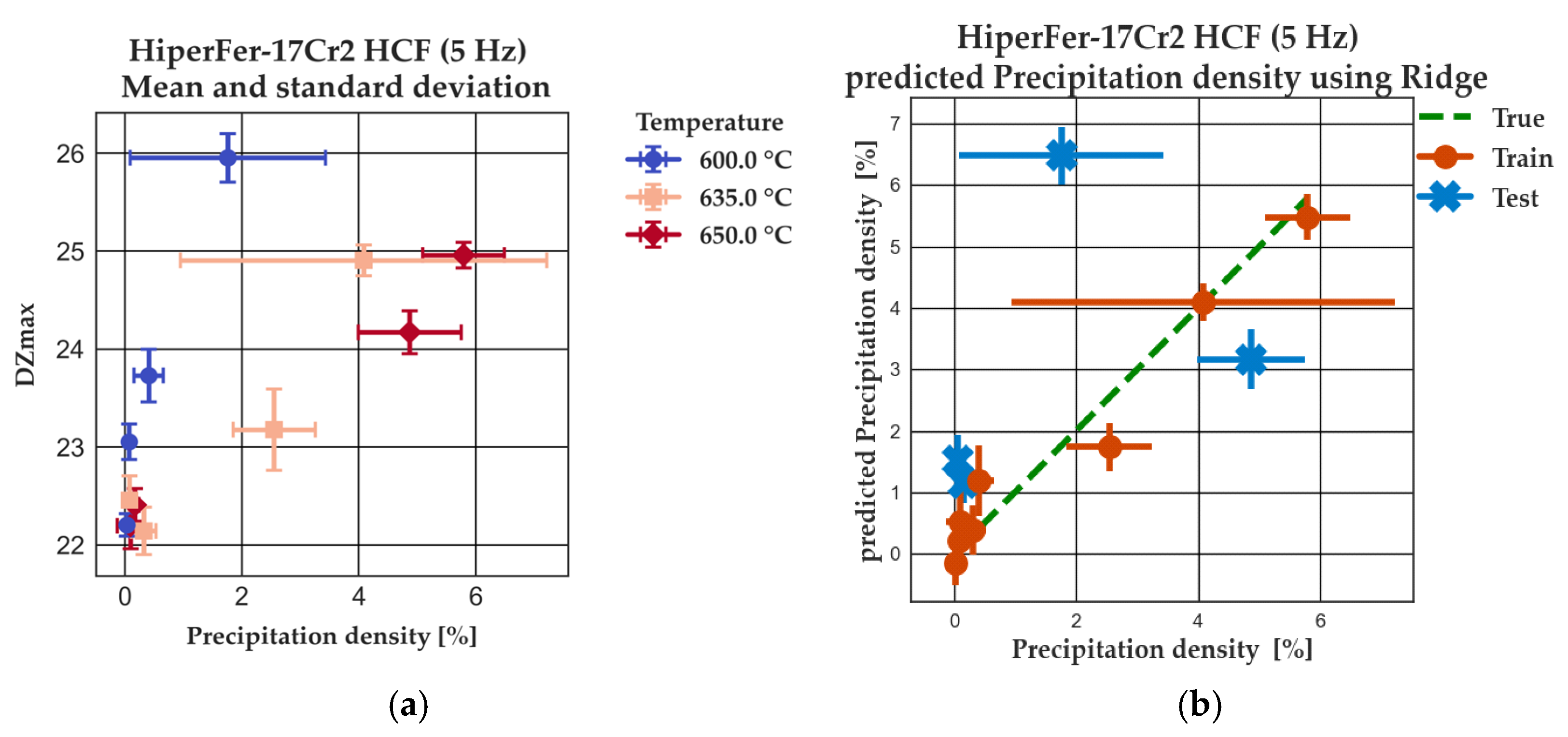
| Material | C | N | Cr | Mn | Si | Nb | W | V | Ni | Mo |
|---|---|---|---|---|---|---|---|---|---|---|
| P91 | 0.101 | 0.043 | 8.8 | 0.44 | 0.36 | 0.07 | - | 0.21 | 0.26 | 0.91 |
| HiperFer-17Cr2 | <0.01 | <0.01 | 17.1 | 0.18 | 0.25 | 0.63 | 2.41 | - | - | - |
| Loading parameters/materials | f [Hz] | 0.05 (LCF) | 5 (HCF) | ||||
| T [°C] | 600 | 635 | 650 | 600 | 635 | 650 | |
| HiperFer-17Cr2 | σa [MPa] | 280 | 260 | 245 | 220 | 210 | 190 |
| Interruption after | 10; 40; 300; 2000 cycles | 20; 200; 2000; 20,000 cycles | |||||
| P91 | σa [MPa] | 320 | 280 | 250 | 310 | 270 | 260 |
| Interruption after | 10; 300; 2000 cycles | 20; 2000; 20,000 cycles | |||||
| Linear Models |
|---|
| Linear regression |
| Partial least squares regression |
| Ridge regression |
| Huber regression |
| Bayesian ridge regression |
Disclaimer/Publisher’s Note: The statements, opinions and data contained in all publications are solely those of the individual author(s) and contributor(s) and not of MDPI and/or the editor(s). MDPI and/or the editor(s) disclaim responsibility for any injury to people or property resulting from any ideas, methods, instructions or products referred to in the content. |
© 2025 by the authors. Licensee MDPI, Basel, Switzerland. This article is an open access article distributed under the terms and conditions of the Creative Commons Attribution (CC BY) license (https://creativecommons.org/licenses/by/4.0/).
Share and Cite
Rabung, M.; Schmitz, K.; Sanliturk, O.; Lehner, P.; Blinn, B.; Beck, T. Non-Destructive Evaluation of Microstructural Changes Induced by Thermo-Mechanical Fatigue in Ferritic and Ferritic/Martensitic Steels. Appl. Sci. 2025, 15, 4969. https://doi.org/10.3390/app15094969
Rabung M, Schmitz K, Sanliturk O, Lehner P, Blinn B, Beck T. Non-Destructive Evaluation of Microstructural Changes Induced by Thermo-Mechanical Fatigue in Ferritic and Ferritic/Martensitic Steels. Applied Sciences. 2025; 15(9):4969. https://doi.org/10.3390/app15094969
Chicago/Turabian StyleRabung, Madalina, Kevin Schmitz, Oguzhan Sanliturk, Patrick Lehner, Bastian Blinn, and Tilmann Beck. 2025. "Non-Destructive Evaluation of Microstructural Changes Induced by Thermo-Mechanical Fatigue in Ferritic and Ferritic/Martensitic Steels" Applied Sciences 15, no. 9: 4969. https://doi.org/10.3390/app15094969
APA StyleRabung, M., Schmitz, K., Sanliturk, O., Lehner, P., Blinn, B., & Beck, T. (2025). Non-Destructive Evaluation of Microstructural Changes Induced by Thermo-Mechanical Fatigue in Ferritic and Ferritic/Martensitic Steels. Applied Sciences, 15(9), 4969. https://doi.org/10.3390/app15094969







